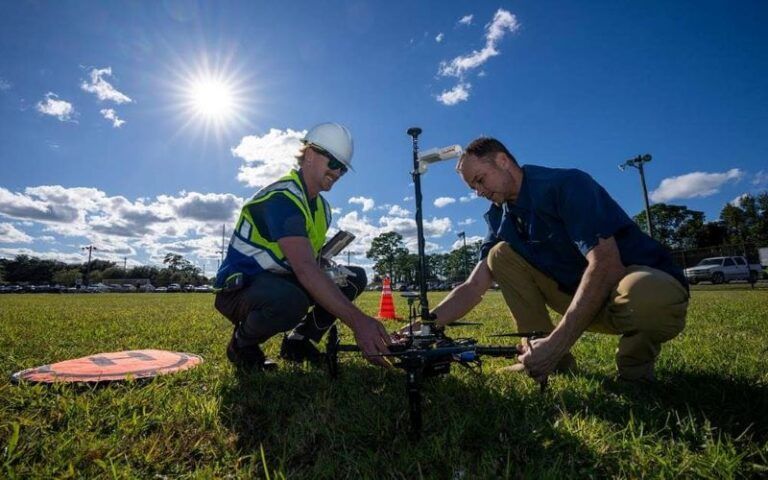Researchers from Embry-Riddle Aeronautical University have devised a new approach to measuring wind effects that uses GPS data to increase measurement accuracy and make unmanned drone flights more reliable.
Most drones use onboard flow sensors to measure wind effects, producing in-flight metrics on which operators rely.
As most drones weigh less than 55 lbs (25kg), even mild gusts of wind can disrupt flights. This makes monitoring and predicting hyperlocal weather conditions essential to flying without disruption or unplanned landings.
The use of GPS, also known as the Wind-Arc method could provide more robust measurements, leading to safer, more efficient flights believe the researchers.
Ultimately, the goal is to make the flight of uncrewed aircraft more predictable, boosting flight reliability and helping to introduce applications such as drone-based package delivery and air taxis.
Harnessing the wind
The Wind-Arc method is not a new concept, but the Embry-Riddle research team has made its use more viable through the incorporation of computer simulation.
Software is used to forecast flight conditions, including heading angle, airspeed and wind speed trends. It then produces real-time statistics of how an aircraft would respond to nuanced changes in the environment.
Marc Compere, associate professor of mechanical engineering at Embry-Riddle’s Daytona Beach Campus and principal investigator on the project said, “The GPS method does not attempt to estimate thrust or drag forces. Using only GPS and orientation sensors, our new strategy estimates wind vectors in an Earth-fixed frame during turning maneuvers.”
“Our simulation provides an ability that no experimental approach can provide: we can simulate wind with exact known inputs and test the method with exact known outputs.”
“It’s all about safety,” said Kevin Adkins, professor of Aeronautical Science at Embry-Riddle. “The lower atmosphere is a new and incredibly dynamic portion of the environment for sustained aviation operations.
“Traditionally, this is an area we have passed through quickly during ascent and descent. Wind poses unique challenges to controllability and the aircraft’s range and endurance.”
Currently, the team uses expensive, custom-built aircraft outfitted with onboard flow sensors to collect weather data, but the process is complex and time-consuming. Those problems go away with the use of GPS, though, and GPS technology comes standard in store-bought drones.
“Measuring wind with just a GPS and a compass provides scaling and simplicity is what,” Compere said. “All drones already have these sensors. They’re built-in from the factory.”
Adkins added that the GPS approach also opens the possibility of crowdsourcing weather data from multiple users at once.
“The sheer number of potential observations can produce a far superior product, especially in urban environments where things change more quickly,” he said. “The use of GPS makes both business and safety sense.”
The research was published in July in the peer-reviewed Drones journal. A patent is pending for the Wind-Arc Method of measuring wind and the team hope to commercialize the technology.
“Now that we see the need and understand the base concept, we want to grow it further,” Krishnan said. “Publish more. Dig deeper into the original idea and expand it to different applications.”
Weather Station
To advance their research further, the team is installing a new weather station atop a light pole near the soccer fields this month at the Embry-Riddle campus.
The station is specifically designed for drone-based atmospheric testing and features an anemometer that measures wind in three directions, offering the team a reference point by which to verify any data recorded by UAS.
“To get scientifically valid measurements, the data collected by those mobile sensors need to be validated against a stable reference instrument. This is how we will continue to publish high-quality journal and conference papers with scientifically valid wind measurements,” Compere said.
This article was written by Mike Cavaliere and has been edited from the original published by Embry-Riddle Aeronautical University





